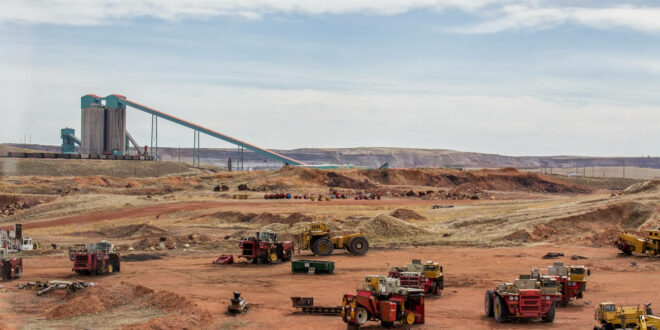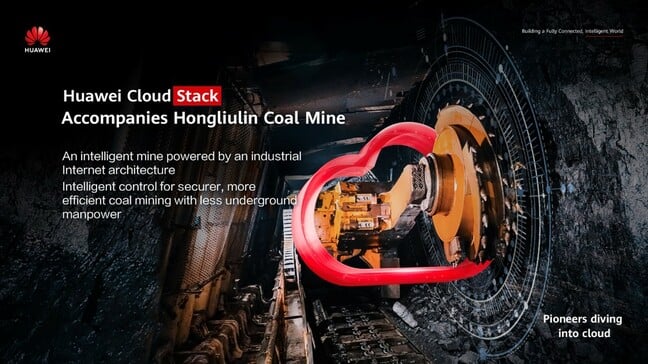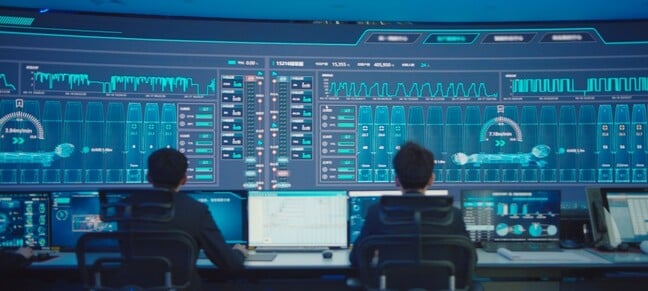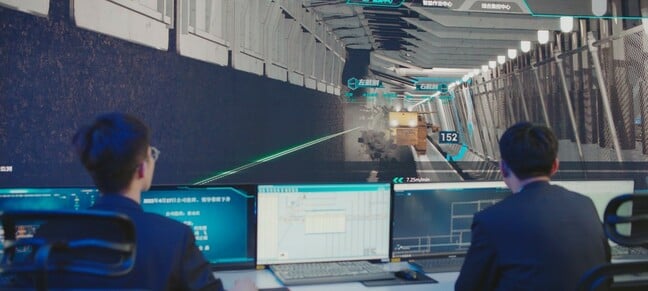My ad Sometimes referred to as “black gold,” coal has been one of the main energy sources for nearly every industry around the world since the 18th century. This is especially true in China, which has little oil and gas but plenty of coal, making it a primary source of energy.
At the same time, to push forward sustainable development, the Chinese government announced that the country’s carbon dioxide emissions will peak before 2030 and carbon neutrality will be achieved by 2060. Driven by these 2030/2060 goals, coal mining companies in China have been chomping on The beginning to accelerate the smart digital transformation of green mining since then.
Hongliulin Coal Mine, for example, a subsidiary of Shaanxi Coal and Chemical Group, is a major player in the industry. The company’s coal mine is located in Mawosu Desert, between Yulin District, Shaanxi Province, and Ordos City, Inner Mongolia Autonomous Region. It is located in the heart of Shenfu Mining District, one of the eight largest mining areas in the world. Coal mined here is transported by more than 1,500 heavy goods trucks and six factory-dedicated trains across China, daily.
Hongliulin’s journey to intelligent transformation
In line with the parent group’s strategy to leverage technological innovation to build a world-class power group, Hongliulin has stepped up efforts to lead the industry-leading innovative, intelligent and digital coal mining. Achieving this transformation is not easy, so to keep focused and motivated, Hongliulin set itself three goals: intelligent cooperation, improvement of underground air quality, and cultivation of a three-dimensional green ecosystem.
To achieve these goals, Hongliulin enlisted the help of the Huawei Coal Mine team in February 2021. Their goal was to integrate next-generation ICT technologies such as cloud computing, big data, and artificial intelligence into coal mining, and then developed a transformation plan. Their network, IT infrastructure, smart application, and integrated management frameworks. To this end, they have invested in 24 smart mining projects or systems, including full 4G/5G network coverage, ultra-wideband (UWB) network, and construction of fixed 5G (F5G) video networks.
Additional upgrades in cyber security protection have been made; Modular data center cloud computing platform deployment; integrated management and monitoring platform; intelligent operation management system; a smart campus; a fully automated coal mining system; And intelligent disaster prevention system. Many of these systems have already been commissioned.
Consolidation wins the day
Among all the solutions Huawei provided to Hongliulin, the digital cloud platform powered by Huawei Cloud Stack that runs across the industrial internet was the most important. In the old days, Hongliulin invested heavily in digital transformation but the results were disappointing due to the lack of standardization. The company deployed a lot of systems for example, but their APIs were not standardized. This means that much of the data generated does not have a uniform format and cannot be imported quickly, while data silos make communication difficult. These issues have plagued the company for a long time.
Fortunately, Huawei Cloud Stack has helped Hongliulin standardize on standard APIs, dismantle data silos, standardize data assets, create digital twins, and improve collaboration to pave the way for intelligent mining. This transformation used a number of techniques. Huawei Cloud Stack used Huawei Cloud’s IoT technology for example, which can be adapted to APIs running across different protocols from different vendors.
It can also be used in conjunction with a 5G-based converged industrial network, F5G OptiX, and an IP Wireless Access Network (IP RAN), a flexibility that has made it possible to connect more than 2,600 Hongliulin devices.
Huawei Cloud Stack used Huawei Cloud’s ROMA Connect application and data integration platform to import data from more than 35 production operational technology (OT) systems and more than 10 IT support systems into a unified data lake. Centralized management was provided by Huawei Cloud’s Fusionlnsight big data platform which enabled more than 100 million records to be imported into the data lake per day, along with the integration of more than 100 devices and 45 system models.
Pangu’s AI-powered mining model from Huawei Cloud provides smart tagging and short-shot machine learning as the model makes predictions based on some training examples. It covers more than 1,000 mining scenarios, including hauling, extraction, transportation, communications, drainage and coal washing, and has helped Hongliulin reduce the development workload by 90%.
It took Huawei engineers four months to identify the Hongliulin devices and import their data into the lakes using Huawei Cloud Stack. They helped Hongliulin build what it says is China’s first-ever smart coal mine based on industrial internet engineering, developing many smart applications such as integrated management and control platform, smart ventilation, smart transportation, smart campus, and disaster prevention.
The end result is a powerful platform for integrated management, effective decision making and service delivery.
Integrated management and control platform based on Industrial Internet architecture – click to enlarge
Improved visibility and safety at the bottom
Hongliulin’s integrated management and control platform is powered by digital twins – a technology that replicates and simulates entire mining operations to predict how they will perform during data collection and analytics to make the entire system more secure and efficient. The simulation displays the 138-square-kilometer Hongliulin coalfield on a 3D dashboard, allowing operators to remotely control autonomous machinery from an above-ground room rather than having to work farther away in a hazardous environment below the surface. It gives operators a meaningful view of the entire mining picture in just a few mouse clicks, including how coal is extracted and transported to the ground and whether stand-alone shears, crushers, haulers and conveyors are performing as required.
The digital twin also enables independent analytics, collaborative decision-making and control across different mining ecosystems. For example, dispatchers can make remote video and voice calls to the surface, and underground miners can quickly assign tasks. Prior to its publication, about 100 miners in three alternating shifts were required to fully cover the automated mining busy periods. Now, thanks to real-time monitoring and remote centralized control, more than 40 percent of miners are needed, underground workloads have been reduced, and worker safety has been greatly improved.
Managing a more efficient workforce
Underground coal mining usually goes through different stages, from exploration and driving (construction of shafts and tunnels) to extraction and transportation. Traditionally, tasks, issues, and incidents were assigned, reported, and investigated verbally or written down by employees, which was slow and inefficient. Now, Hongliulin’s intelligent operation management system has digitized coal mining operations on all fronts, including manpower, machinery, materials, methods, environments, and measurements. It provides real-time operational insights and has improved worker safety.
This system allows managers to quickly send tasks to workers over the Internet and uses artificial intelligence to replace manual check-ups for foreign objects at set intervals with smart check-out software around the clock. In doing so, it reduces the time a worker would normally need to spend underground by about two hours, improving overall efficiency by 30 percent.
By working with partners such as Huawei Cloud, Hongliulin expects to continue to spur smart digital transformation while reimagining the coal mining industry using the power of technological innovation.
Originally posted 2022-11-23 10:16:52.



